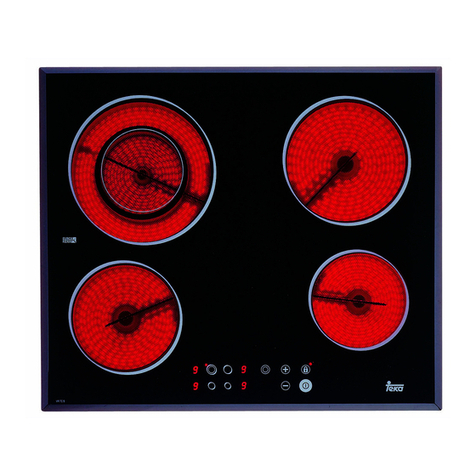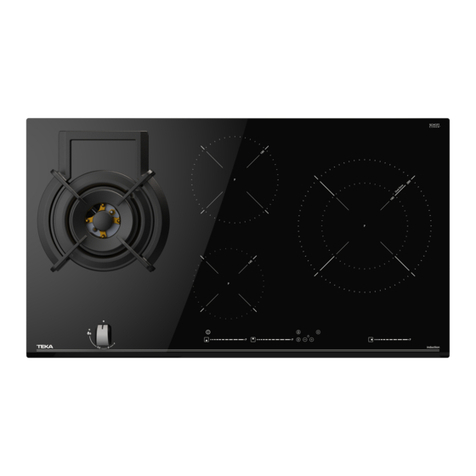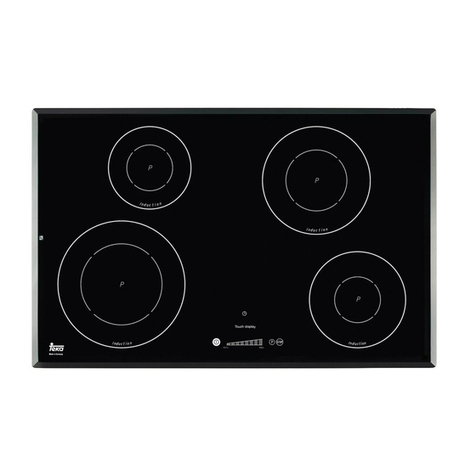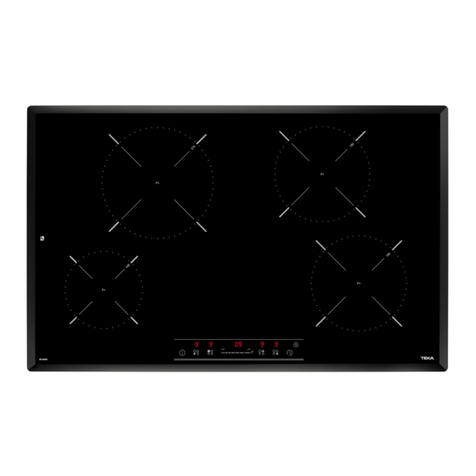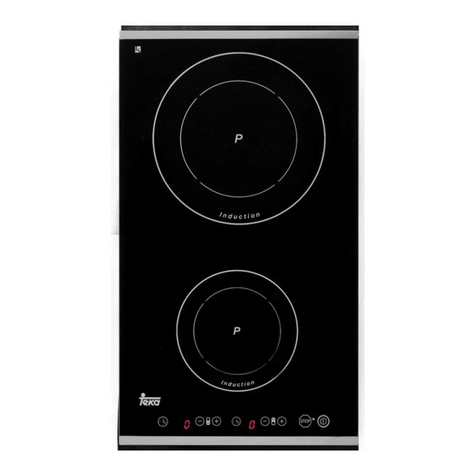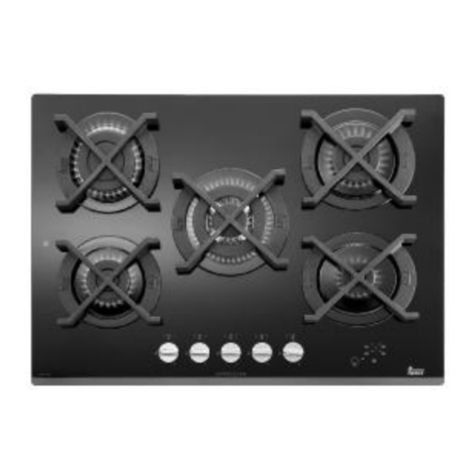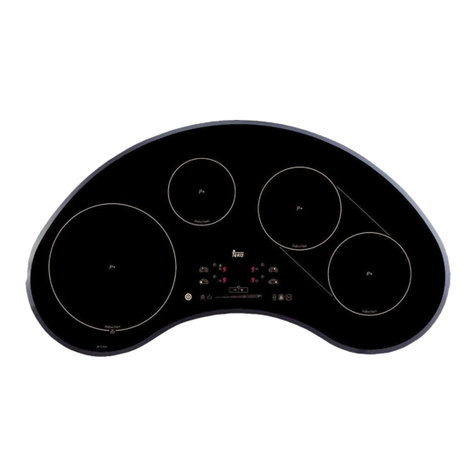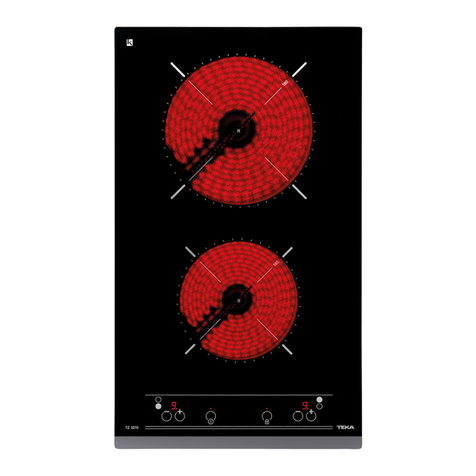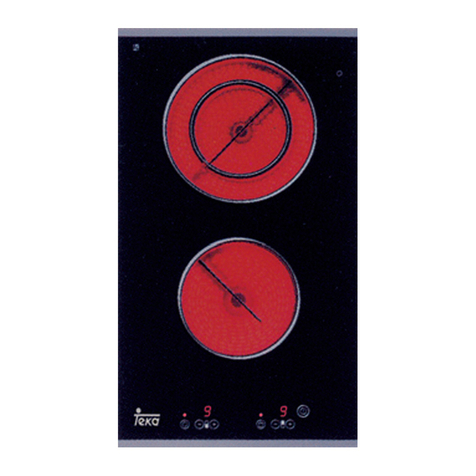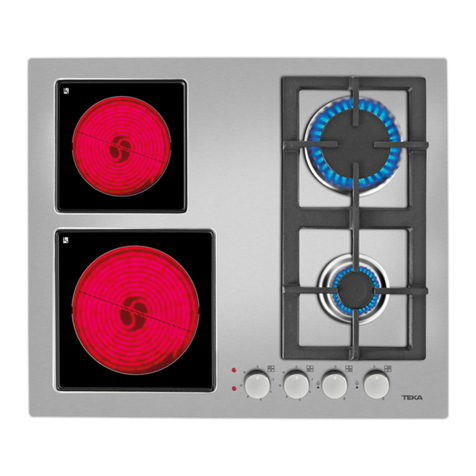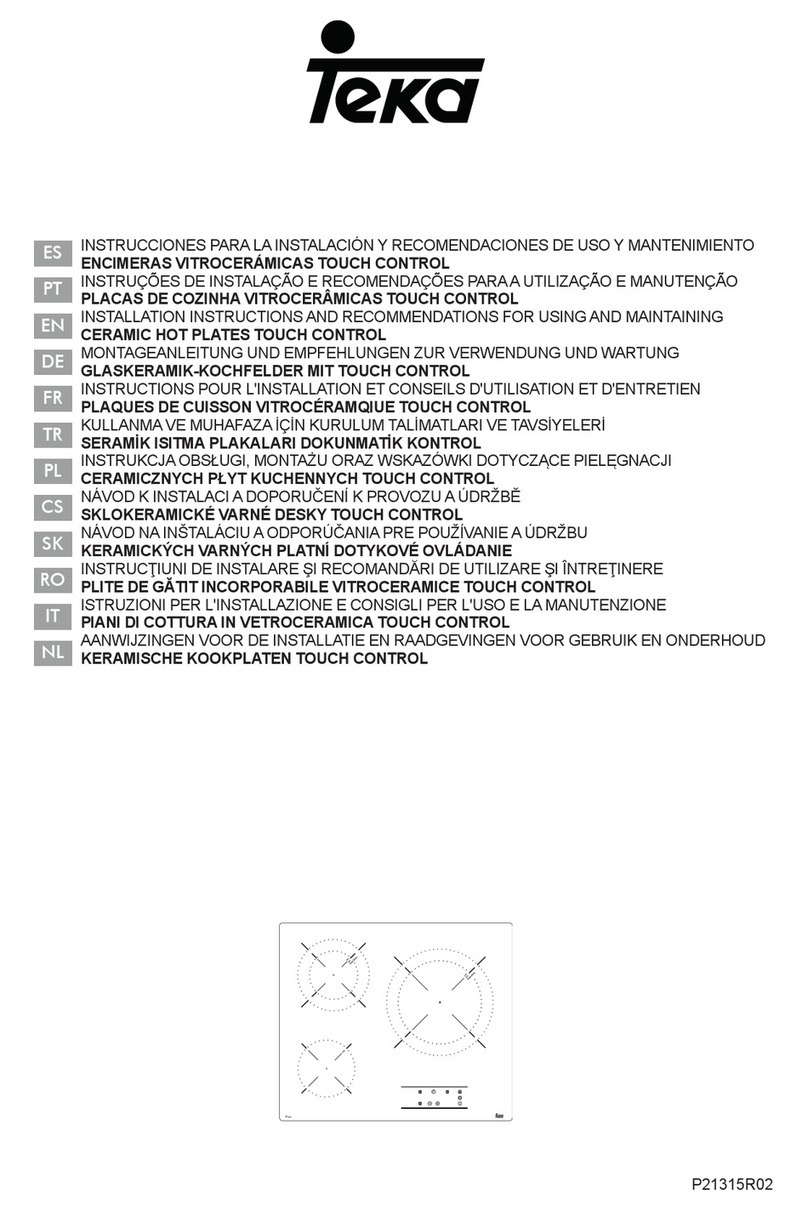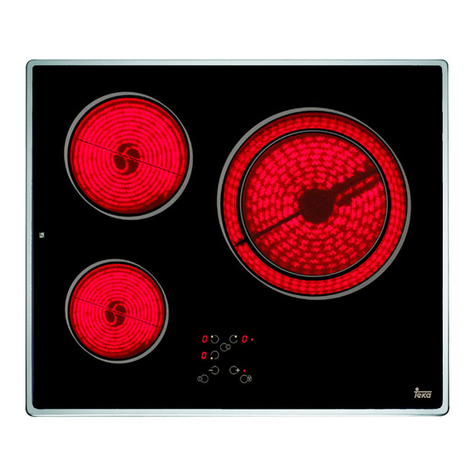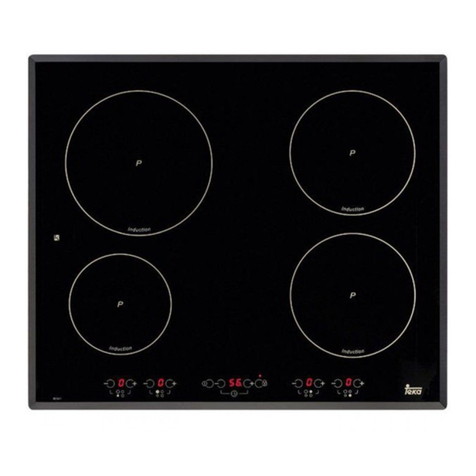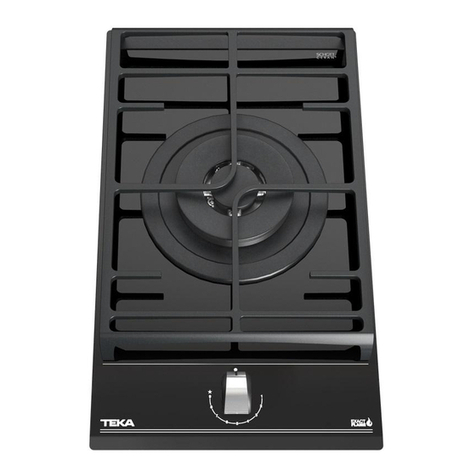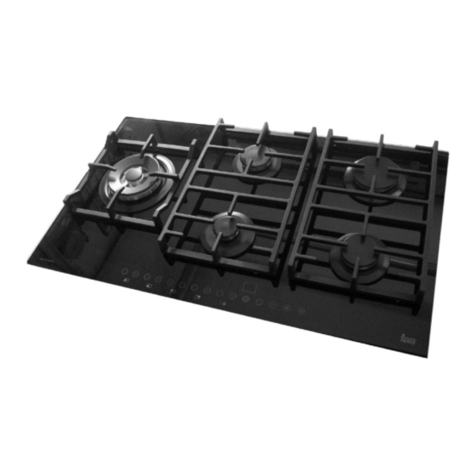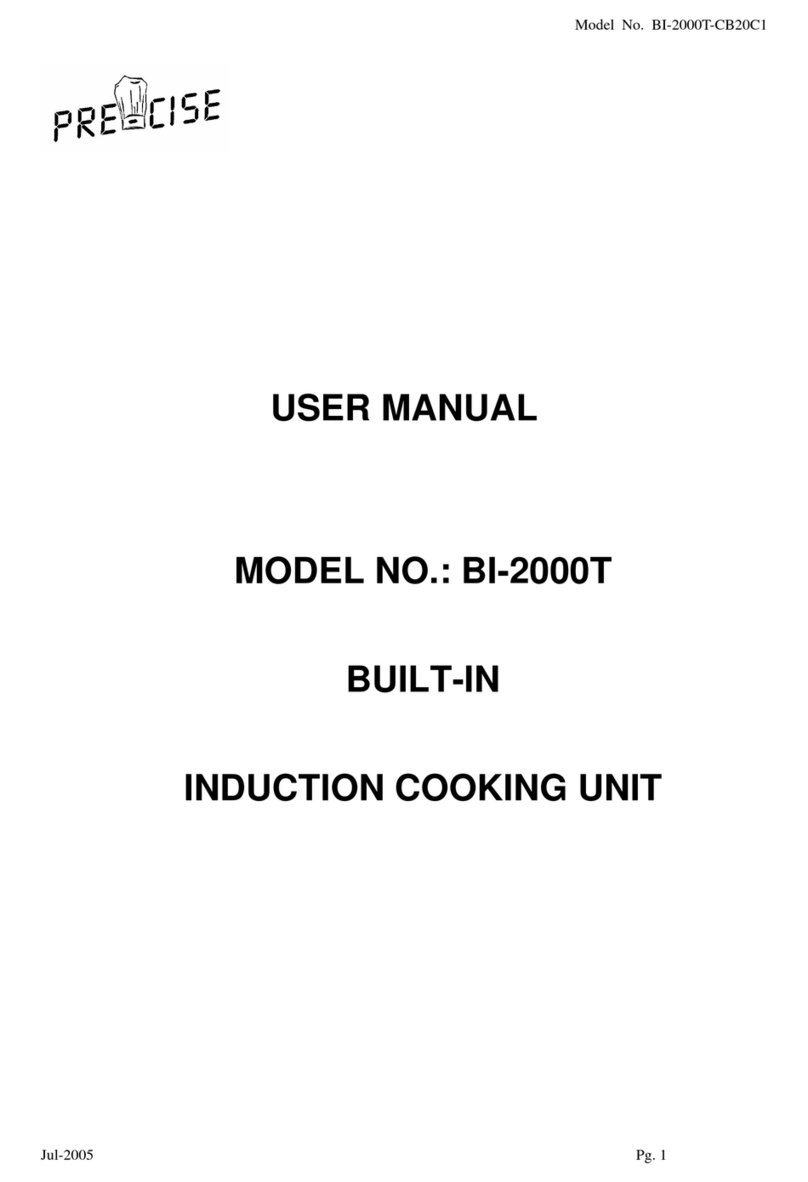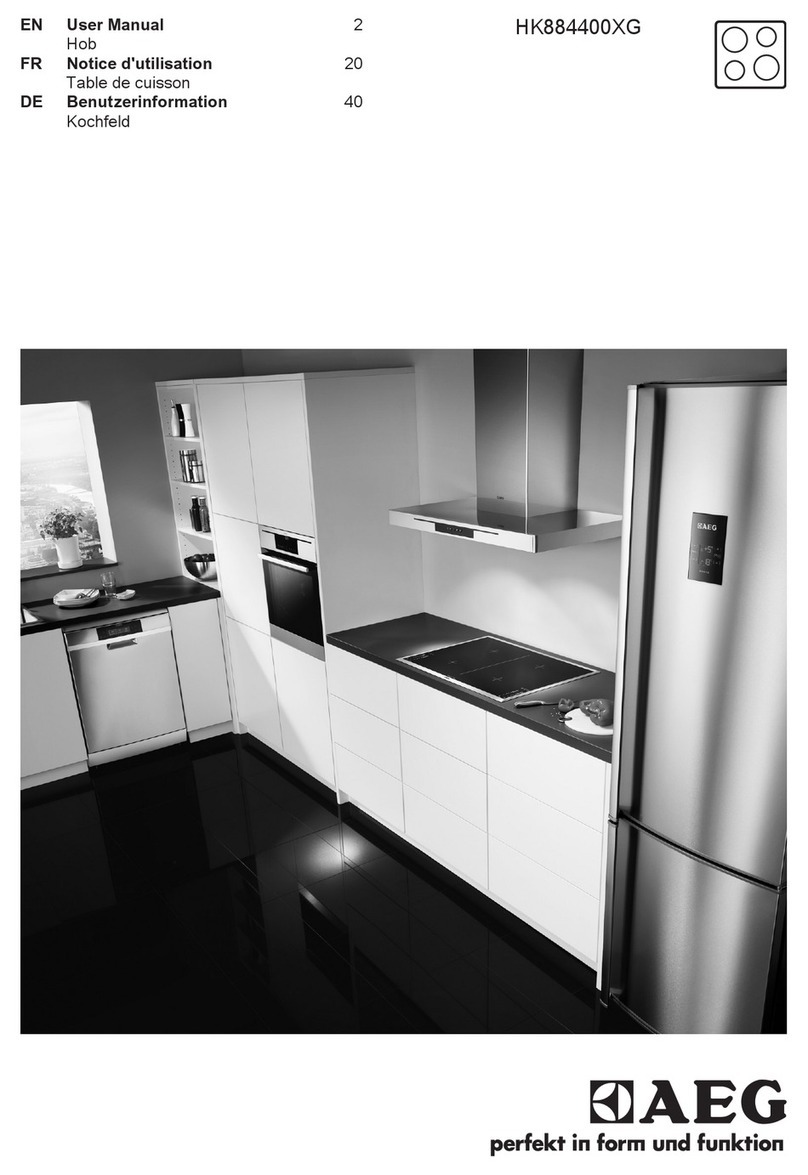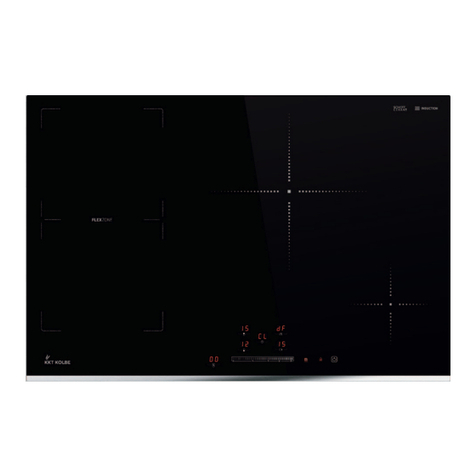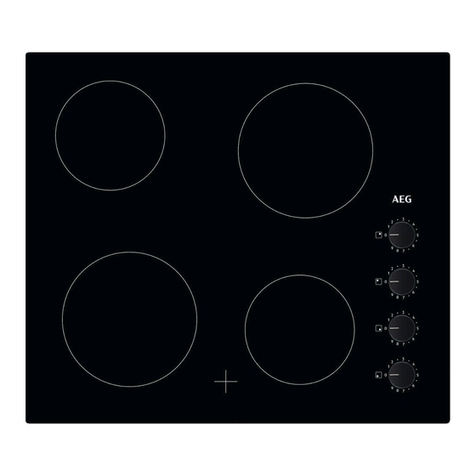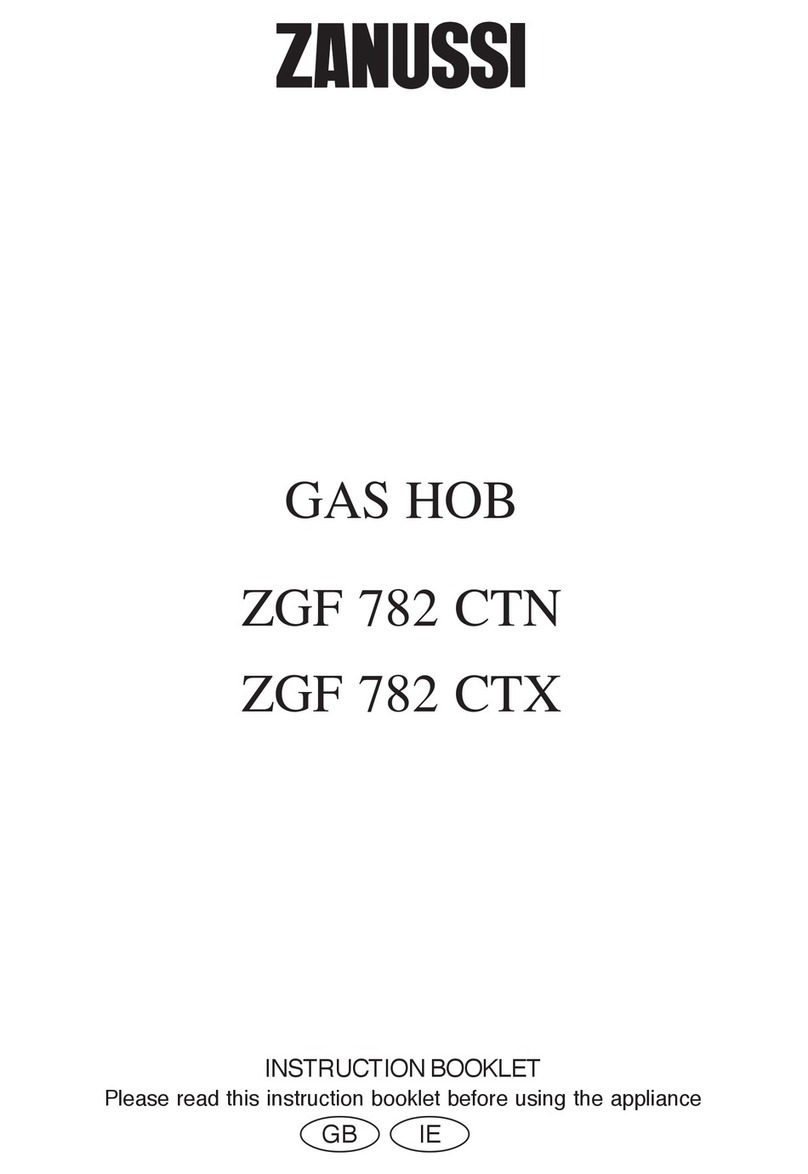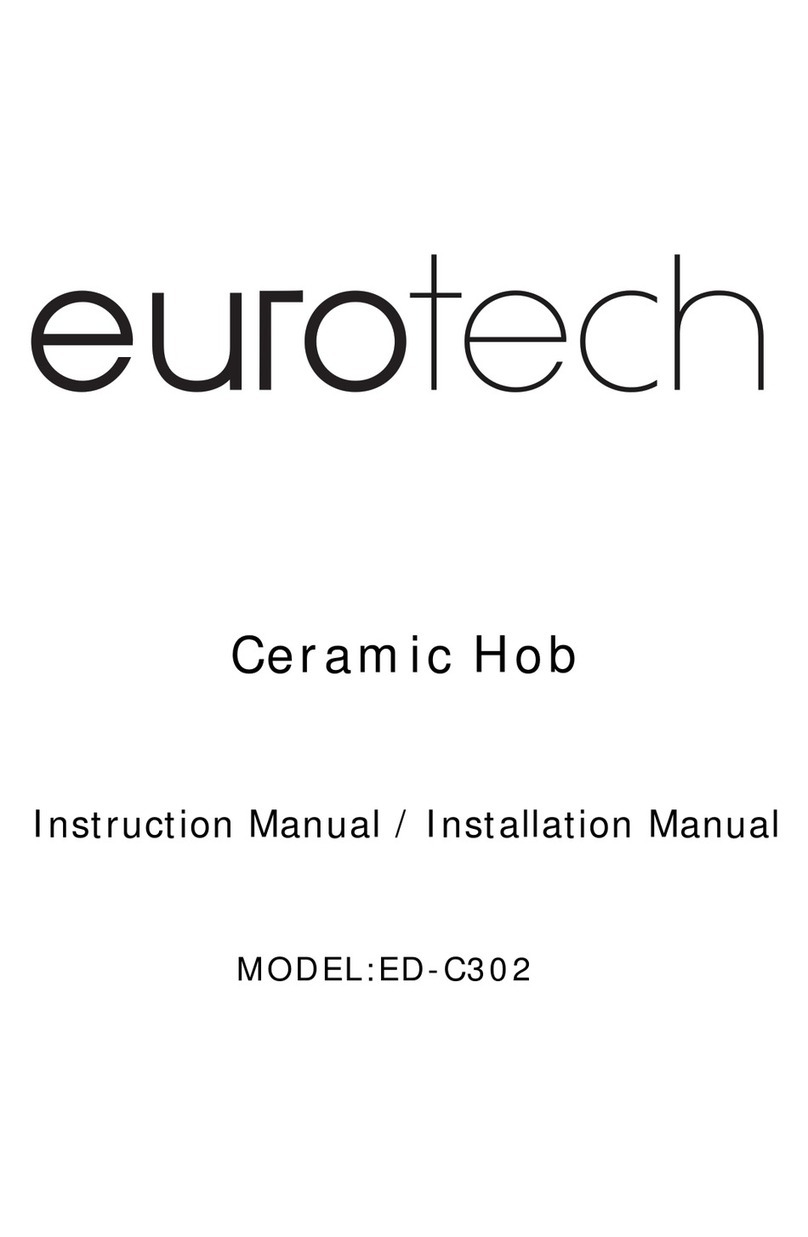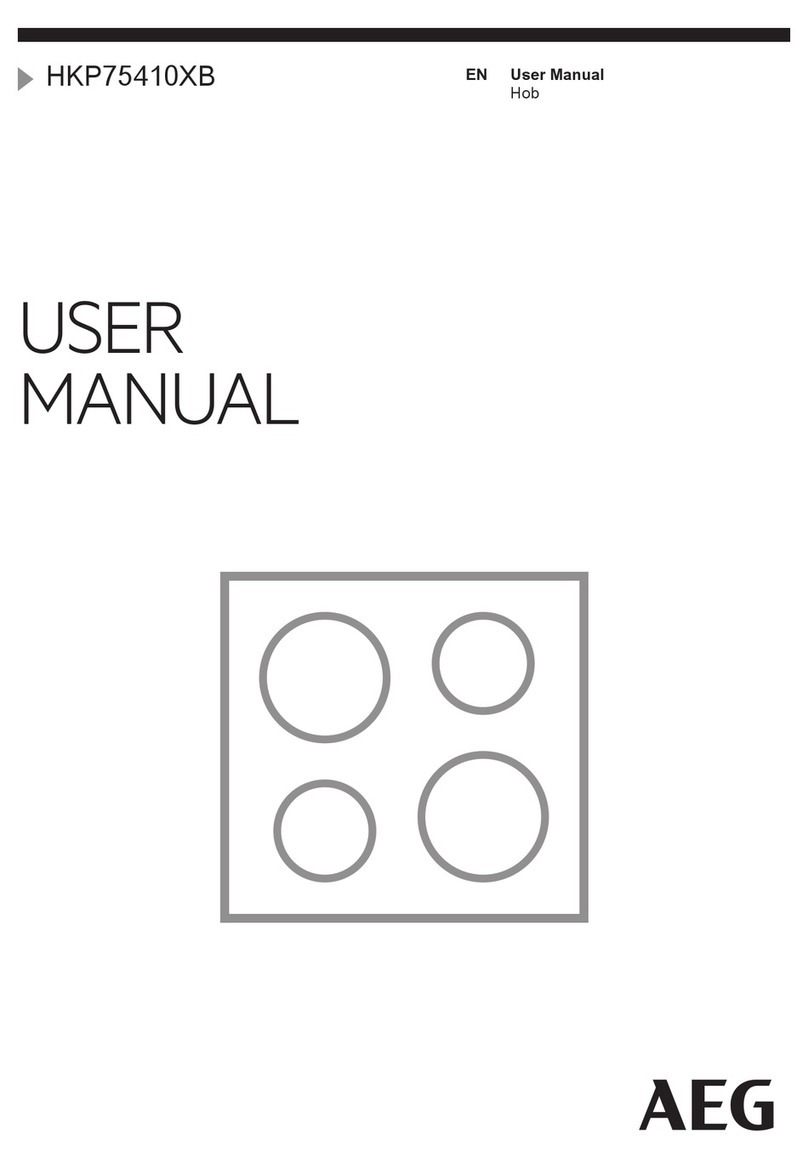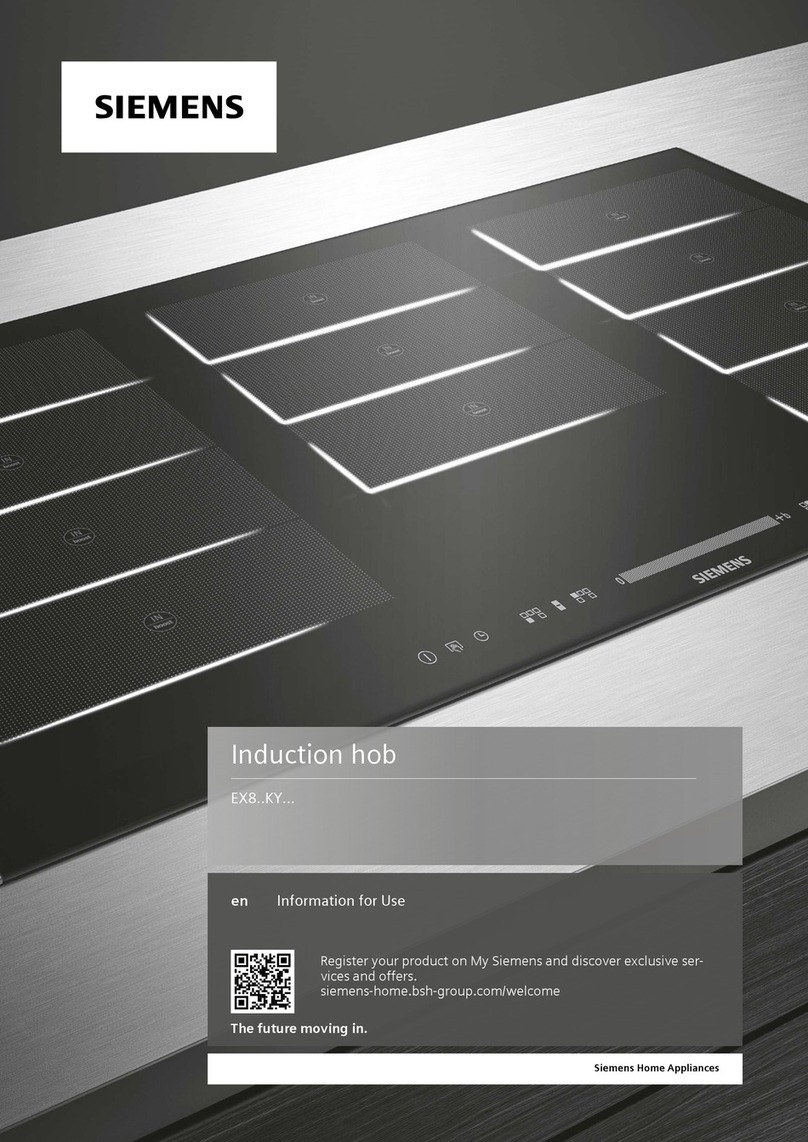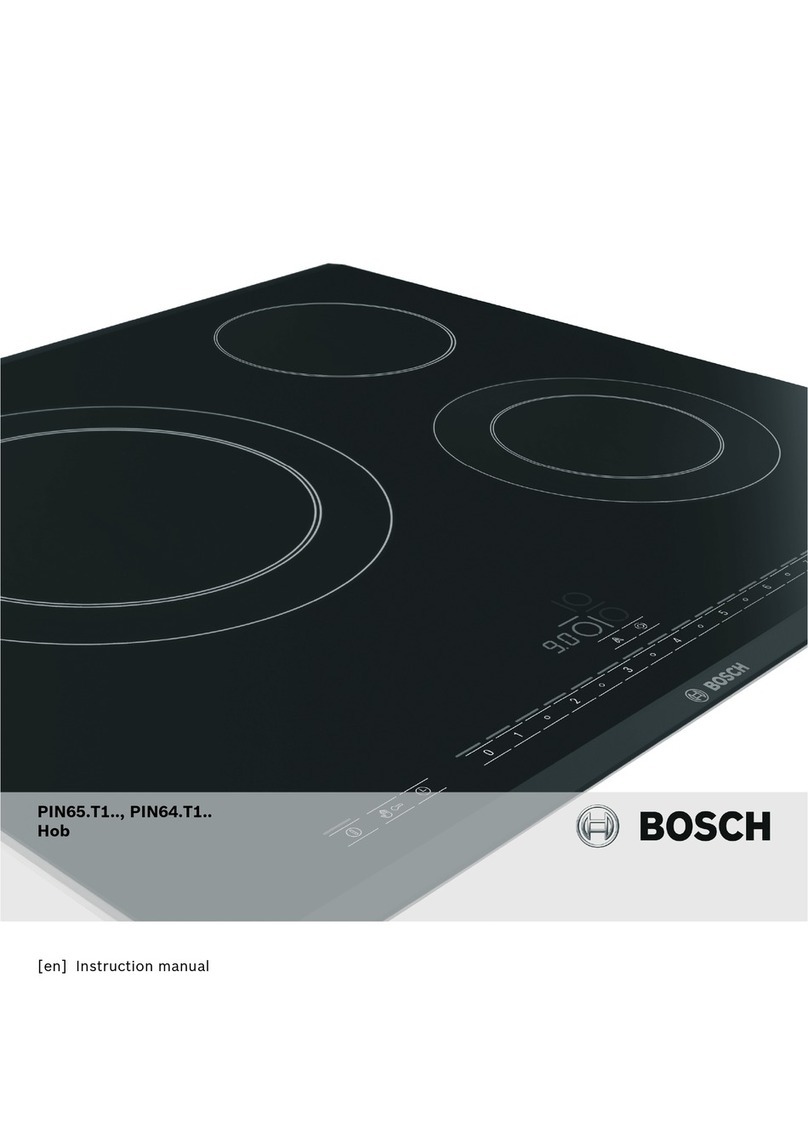7
5) FIXING THE HOT PLATE
The hot plate has a special seal which prevents
liquid from infiltrating into the cabinet. Strictly comply
with the following instructions in order to correctly
apply this seal:
-Detach the seals from their backing, checking that
the transparent protection still adheres to the seal
itself.
-Overturn the hot plate and correctly position seal
“E” (fig. 9) under the edge of the hot plate itself, so
that the outer side of the seal perfectly matches the
outer perimetral edge of the hot plate. The ends of
the strips must fit together without overlapping.
-Evenly and securely fix the seal to the hot plate,
pressing it in place with the fingers.
-Fix the hob with the proper brackets “S” and fit the
prominent part into the porthole “H” on the bottom;
turn the screw “F” until the bracket “S” stick on the
top (fig. 10).
-The gas hob should be installed with a minimum
safety distance of 150mm from the border of the
gas hob to the side walls and 57.5mm from the
border to the front wall and the back wall. Any
possible wall unit over the cook-top must be placed
at a distance of at least 760mm from the top (fig. 7
and 8).
-The safety distance between the bottom of the gas
hob and other appliances should be at least 70mm
(fig. 7).
- If there is no enough space as specified, make sure
to install a heat-proof panel.
Remark: Below is the suggested clearances. Actual
installation will be veried subject to different kitchen
situations.
IMPORTANT INSTALLATION
SPECIFICATIONS
The installer should note that the appliance that
side walls should be no higher than the hot
plate itself. Furthermore, the rear wall, the
surfaces surrounding and adjacent to the
appliance must be able to withstand an
overtemperature of 65K.
The adhesive used to stick the plastic laminate
to the cabinet must be able to withstand a
temperature of not less than 150° C otherwise
the laminate could come unstuck.
The appliance must be installed in compliance
with the provisions in force.
This appliance is not connected to a device able
to dispose of the combustion fumes. It must
therefore be connected in compliance with the
above mentioned installation standards.
Particular care should be paid to the following
provisions governing ventilation and aeration.
6) ROOM VENTILATION
It is essential to ensure that the room in which the
appliance is installed is permanently ventilated in
order to allow the appliance itself to operate
correctly. the necessary amount of air is that
required for regular gas combustion and ventilation
of the relative room, the volume of which must not
be less than 20 m3. Air must naturally flow through
permanent openings in the walls of the room in
question. These openings must vent the fumes
outdoors and their section must be at least 100 cm2
(see fig. 3). Construction of the openings must
ensure that the openings themselves may never be
blocked. Indirect ventilation by air drawn from an
adjacent room is also permitted, in strict compliance
with the provisions in force.
7) LOCATION AND AERATION
Gas cooking appliances must always dispose of
their combustion fumes through hoods. These must
be connected to flues, chimneys or straight outside.
If it is not possible to install a hood, an electric fan
can be installed on a window or on a wall facing
outside (see fig. 4). This must be activated at the
same time as the appliance (see fig. 5), so long as
the specifications in the provisions in force are
strictly complied with.
INSTALLATION
FIG. 8 FIG. 9 FIG. 10
